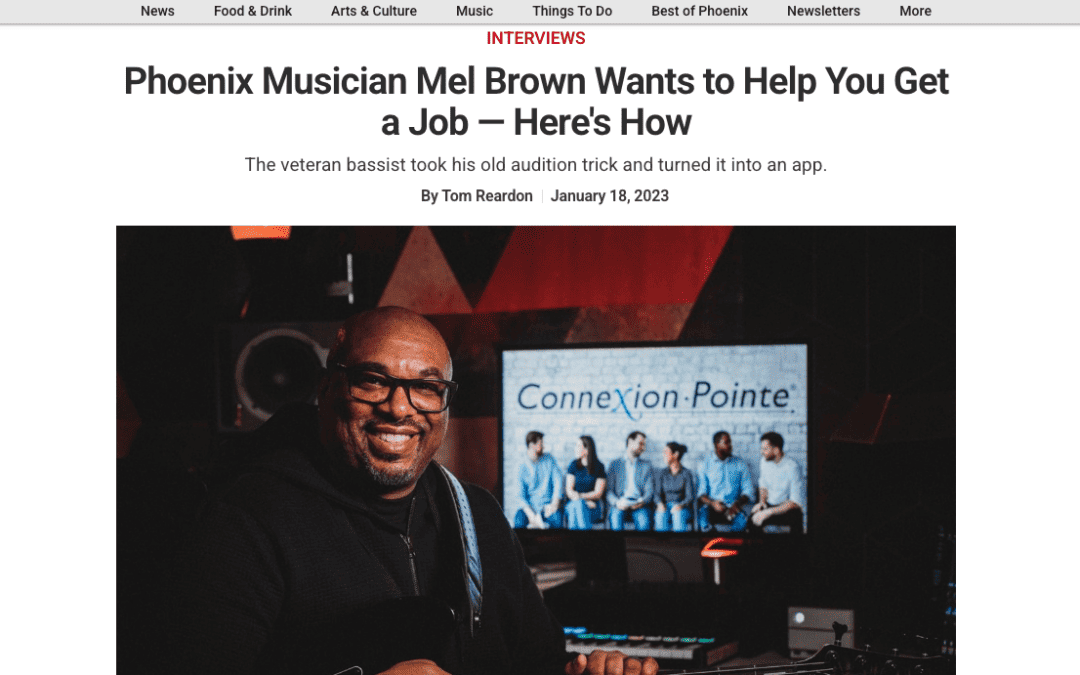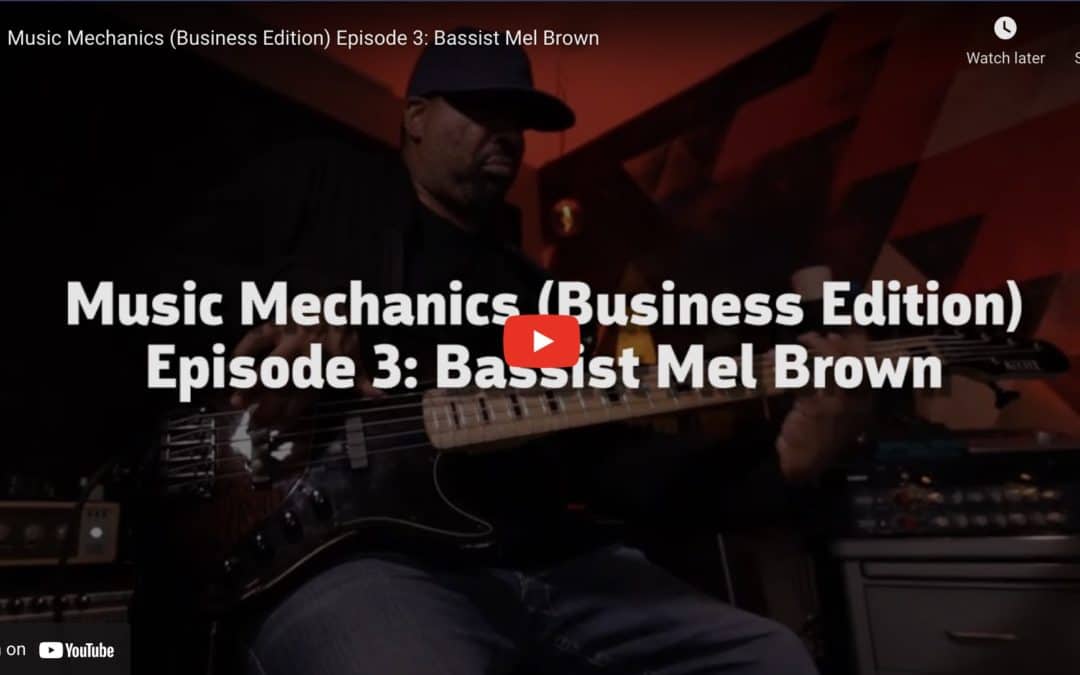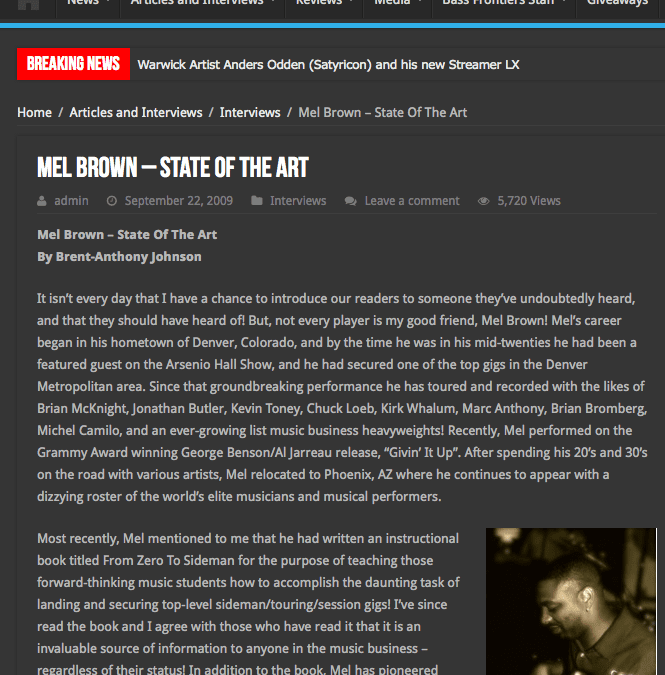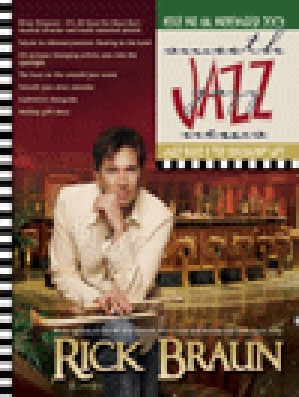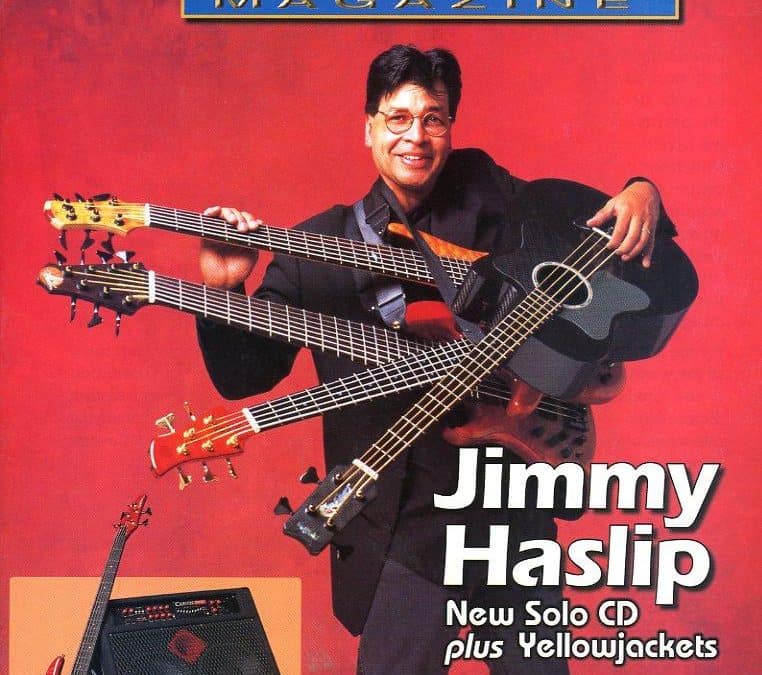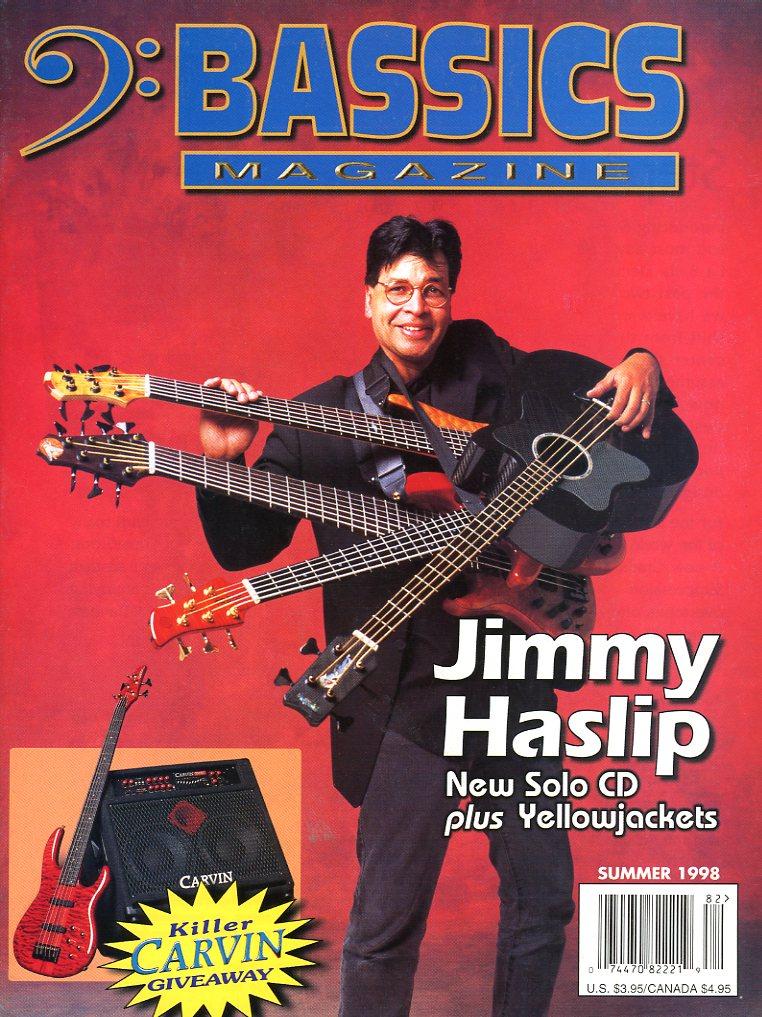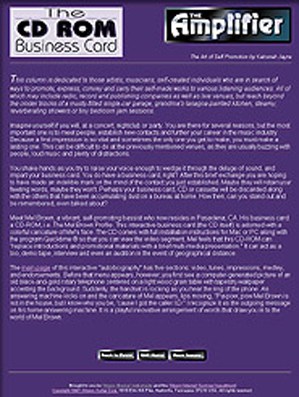BAJ: Hi Mel, and welcome to Bass Frontiers! It’s always a good day when I can hang with a friend and talk shop! Let’s begin by discussing your new book, From Zero To Sideman ! How long has this wonderful idea been brewing, and what where the first steps to seeing it into fruition?
MB: What’s up BAJ! Thanks for interviewing me for this magazine. Thanks for the kind words too, I appreciate it all more than I can say. It’s always a special treat to talk with a friend who has been there from the beginning! So, I’ve been looking forward to this.
The initial idea of my book came way back in 1993, when I quit my day job at a Denver bank to pursue a career as a sideman in the music industry. The first thing I realized was there were no resources available to guide me in getting educated; finding work and integrating myself professionally into the local music scene. I didn’t know how to get a gig, how much money to charge, or how the music business worked in general. I was also 25 years old, and felt like I had a lot of catching up to do! So, I started going around town, watching other musicians play and asking them how I should go about getting started. Some musicians, like bassists Dave Randon, Billy Rich, Thomas “TJ” Jefferson, Vernon Barbary, Chris Engleman, Michael Friedman, and Kirwan Brown were helpful, and they gave me some great advice – and even lent a helping hand by showing me the ropes, lending me gear, and recommending me to sub for them.
Others found my ambition amusing and laughed at my ignorance to their profession. Instead of helping, they made jokes among themselves or told me to do ridiculous things to get started. Some of these players would cancel their gigs rather than hire me. Others would get together, gang up on the bandleader and threaten to quit unless the bandleader fired me. True stories. I understood, from an economic perspective, that some players were resistant to sharing a very limited pie with a new guy. What I didn’t understand was many of those negative musicians were making their money playing R&B, Pop, Motown, Rock, and Smooth Jazz music – the style of music that I loved the most and was already competent at performing. To be fair, I was inexperienced, but most of them didn’t sound authentic to me… so I wondered what they based their resistance to my presence on. I guess you could say that was my first taste of music business politics. Later, I realized that I didn’t need their acceptance to succeed and that I needed to find a way out of Denver to make my career happen. I also knew that I had the goods, with my groove, and I had a plan that treated being a sideman like any other service-oriented business.
I’d majored in Human Resources and Accounting in college and applied my knowledge of job descriptions, recruiting, training, interviewing, and hiring to my musical endeavors. I looked at myself as a small company that provided musically authentic and highly professional, bass services in town. My plan worked, and I wanted to share it in a book for anyone interested in being a Sideman.
Now there is a book that a parent, student, or semi-professional can go to and quickly get an overall perspective of being a Sideman – the most common of musical careers. The book presents many realities you don’t learn in music school and addresses lessons that you’d otherwise have to learn the hard way. It’s a step-by-step game plan that anyone can use – the shortest distance from zero to sideman.
In seeing this book come to fruition, the hard part was simply sitting down over a 9-month period, getting focused, and writing it. The idea of contacting a major publisher and chasing a book deal was discouraging. It would have taken forever, and just seems like such a rip off to me. I knew there’d be a demand for my information and I didn’t want to waste time trying to convince some schmuck of the obvious and then give his company most of the profit. That whole industry is going to have to do some soul-searching to survive, because people want to move forward right now – not two years from now.
An article on the internet written by James Bilodeau that outlined a new technology called Print On Demand or POD inspired me. POD was a solid, cost effective business model for my book! So, I decided to go for it. First, I set up a publishing company (an LLC called Career Equity). My slogan is Unlocking the Value of Experience. Next, I got a bank account for the company, bought some software, bar codes, a new Intel MacBook… and I started writing! Later I connected with a local artist named Doug Bale for the illustrations, and hired Yvonne Vermillion at www.selfpublish.com to do the layout. I secured my copyright and then set up an account as a publisher with a POD printing company called Lightning Source who provided fulfillment services and worldwide distribution to internet outlets and brick/mortar retailers too. I bought the domain name www.fromzerotosideman.com and set up a basic website describing the book. I linked that website to a free PayPal account so that buyers could use their credit cards. These orders come directly to me. I send my demo along with the book to advertise my service and as an example of what I recommend in the book. That’s it. Now I’m in the book publishing business!
BAJ: Anyone who knows anything about you sees that you have an incredible roster of awards, accomplishments and credits! But, what is your day-to-day like since you “settled down” a few years ago? Better put, how has your career changed in the past 5-years, and what were some of the skills you had to develop to keep your game sharp?
MB: My day-to-day revolves around my son, Chase. I’m with him before and after school – so everything else has to allow that. I earn most of my income from recording over the Internet, which can be time-consuming so I’m up early, around 5:30AM getting my coffee on, and I’m usually recording by 6AM. I’ll cut until my son gets ready for school. Then, we eat breakfast and ride bikes to school – which is a little exercise for me. While he’s at school, I have to focus to finish my business and be back to scoop him up promptly by 3:00 PM. If I have sessions at home, I’m trying to knock them out and upload them to producers and other clients before 10:00 AM. From 10 ‘till noon I address issues associated with the publishing company and self-promotion like responding to emails, burning my CD Profiles, answering questions, checking my website and MySpace pages… and thanking folks for their feedback. If I have sessions at other studios I try to book them from 10 until 1, so I can be back on my side of town on time for my son. I have a house gig 4 nights a week at a spot called Voce in Scottsdale, AZ from Wednesday-through-Saturday, and I’m the MD at a large Christian church called Central Christian. That’s all-day Sunday for 3 services. Sunday’s are the hardest for me, because I’ve got to be up at 5:00 AM to learn music and prepare to lead the band. To keep my game sharp I had to learn how to manage my time – how to turn it on and slam tracks at 6:00 AM. I’ve also developed some basic engineering skills to get a good-recorded sound, and I’ve had to learn new ways to keep my house gig fresh and interesting after several years. Most importantly I’ve learned how to be a good daddy, earn my son’s respect, and still be the best musician I can be. Talk is cheap to kids these days! So, as you know, you must lead by example not just words. It’s not very glamorous but there’s plenty of glory!
BAJ: Please give our readers an example of a session you’ve participated in recently. Let’s talk about the George Benson/Al Jarreau session, and the tune that won the Grammy! Also, let’s discuss how you got the call for the session and what followed!
MB: There have been several sessions lately so I’ll just share a few of them. I recently cut a couple of tunes for Dave Koz, Pete Gitlin, Darren Rahn’s Christmas project, Kloud 9’s new project, and a track by a flutist named Althea Rene called “No Restrictions”. Althea’s CD comes to mind because I cut the track in 1 take with no fixes! It’s a great example of that special energy that happens the first time you play something. Of course, they’ll edit all the hip stuff out! (Laughter) I have a video of me recording the take and I’m considering putting it up on YouTube. I recorded some tracks for a talented bassist from Kansas City named Julian Vaughn that I’ve never met. There’s also a cool session with my friend Rachel Eckroth. She’s cutting a very good album right now here in Phoenix – check her out! That session was cool because I showed up at the studio and Steve Gadd was playing. He’s the bomb! The George Benson session was a classic case of being in the right place at the right time. George walked into my house gig and was hanging out. He later said he liked my playing on Marion Meadows’ “Player’s Club” CD and wanted to use me on a project that he was doing with Al Jarreau. I didn’t believe him at the time… but he made good on his promise later. He originally said that I’d have to fly to LA to do the session, and I was sad because I couldn’t do that. I promised my son that I wouldn’t travel anymore and it just wasn’t worth it to break my word to him. George worked it out when he asked a producer in town named Michael Broening to do a couple of tracks. He insisted that I play, and Michael was cool with it. So, I got to cut at my house. One of those tracks “Mornin’” won the Grammy for Best Pop Instrumental in 2006. To be honest, I think that it won because I kept my word to my son not to travel. With Marcus Miller, Stanley Clarke, and Abraham Laboriel also playing bass on the album… that’s the only logical explanation for my good fortune!
BAJ: Describe your travel kit and those things essential to your comfort when you’re flown to a session. Also, please talk about some of the gear you’re currently using to ‘fly’ tracks around the globe.
MB: Like I said, I’m pretty militant about not traveling. So, I turn down offers for recording out of town. There’s no travel kit to tell you about here! (Laughter) I celebrated my Grammy by getting rid of my LA phone number and recommitting myself to doing things my own way – which means no traveling for artists or other people. Now that my son is a little older he asks me to leave town now! I’ll consider some traveling to promote my book. With the gear that I use to cut tracks at home I keep it simple. I use a J-Style bass (Fender American Deluxe Jazz 5), a Lakland DJ 5 with J-Retro, a Pensa Custom J5 with a Bartolini preamp, a Fender Geddy Lee 4-string (with J-Retro). Otherwise, I use Dean Markley SR2000 light gauge strings, and a Fender TBP-1 Bass Preamp. I monitor with M-Audio BX8a powered monitors and the BX10s subwoofer. I rout signal to the monitors using the Presonus Central Station. If I record on my MacBook, I use the M-Audio FireWire Solo, and I record right into Garage Band or Sonar depending on the track. If I record on the PC I run the preamp into the M-Audio Delta 44 sound card and then into Sonar 7 Producer’s Edition. Engineers love the sound, and most them ask me what I’m using! I ask some of them to guess and they always guess some expensive piece of boutique gear. When I tell some engineers what I’m using they can’t believe it! They playfully insist that I’m lying about my economy gear. But they still call me for work so I know they’re happy with my tracks. Right now I appear on 4 of the top 10 singles on Billboard Magazine’s Contemporary Jazz chart – including the #1 and #2 spot. Over the last 4 years I’ve recorded about 16 top ten songs including 6 #1 singles and 5 #1 albums. I did a track called “Stand Up” on the new Jennifer Hudson album produced by Clive Davis and made the final album. I think my gear works just fine!
BAJ: As I read your book, it occurred to me that you would be a great topic for a documentary! Have you considered adding such a project to your astonishing list of credits?
MB: No I can’t say that I have. I don’t look at myself as being featured – only as a Sideman. It might be fun though! But it’d probably be pretty boring for the audience! (Laughter)
BAJ: Let’s go back a little… what was the first 3 years of your musical development like? What were you able to study, and how important was that to your musical maturation process?
MB: I spent my first 3 years learning songs. My first influences were R&B songs with players like Verdine White, James Jamerson, Anthony Jackson, Chuck Rainey, Nate Phillips, Mark Adams, Tommy DeBarge, Marcus Miller, Will Lee, Joe Puerta, Bootsy Collins, the guy from Fleetwood Mac (Editor’s Note: John McVey), Bernard Edwards, Prince, Kevin Jenkins, David Hood, Robert Wilson, and others like that.
We up-and-coming players had to be able to groove to play the bass at my school or you’d get dissed. My groove was strong because I learned how from the best cats. But I was also into Rock and alternative music like Sting, Steve Harris, Paul McCartney, Percy Jones, Rudy Sarzo, Billy Sheehan, and Geddy Lee. I knew every Rush song note-for-note from the first album through “Signals”! I could play “Digital Man” accurately, in time, and cleanly when I was in the 9th Grade. I would start playing along with the cassettes early on Saturday morning and wouldn’t finish until late afternoon! I got my early finger chops from learning Rush tunes. I could see the scale shapes in the lines that Geddy was playing, and I’d try to use those shapes in other tunes. Then I noticed how Anthony Jackson would use lines while he grooved to bring heat and intensity to the song – like his famous run in the out chorus of “Whatcha Gonna Do For Me” by Chaka Khan. That was how I learned how to play… learning songs by ear. This was enormously important in learning how to play styles authentically. Students who had the benefit of lessons usually depended on the written music and often lacked the authenticity, swagger, style, and character of the original recordings. But I learned early on that authenticity is the most important element in playing music and can only be picked up through learning by ear.
BAJ: What things are you currently practicing, man?
MB: Not much because I don’t have time to practice! When I can, I practice by thinking about the music that I’m currently responsible for performing and mentally working out ways to play the tunes better. I then try to apply my thoughts when I get onstage. When I have time to actually sit with a bass in my hands and practice, I usually work on using bebop techniques to play changes or intervallic improvisation. I’m always mentally working on phrasing for solos, and on how to add interesting but suitable variations to common pop grooves. That’s about it.
BAJ: Along with the previous question, please give our readers 5 songs everyone should be able to recite from the Bass Lexicon?
MB: 5 songs that everyone should be able to recite are the 5 most popular songs of the style they claim to be good at, the 5 most difficult songs that they have to play on their current gigs, the 5 songs that they failed to play authentically on any past gigs, or 5 songs outside of a style they normally play.
BAJ: As you have accomplished a great deal in your life to date… what are a few things you still want to accomplish – as you look forward to the next 3-to-5 years? Also, what accomplishments do you list amongst your favorites?
MB: I’d love to play with Steely Dan. I really enjoy their music and I’m a big fan of the players on their albums over the years. I don’t think it’ll ever happen so I started a Steely Dan tribute band here in Phoenix with my good friend Matt Goodman. I was in New York at SIR rehearsing with Marc Anthony years ago and Steely Dan was rehearsing across the hall. Walter Becker invited me in and let me listen while he played bass and the band rehearsed. Donald Fagen said hello and was gracious about my interest in the music and my presence at the rehearsal. He invited me to stay as long as I liked and I watched for almost 90 minutes. I think I’d fit in great on that gig and I hope I get an opportunity to play it at least once. Both Chuck Rainey and “Ready” Freddie Washington promised to throw my name in the hat if it was ever fitting. I try to keep track of their current song list just in case the impossible happened. I’m not a big name player or anything like so I doubt it would happen… but it’s still fun to dream about. My favorite accomplishments are being a good daddy, winning a Grammy and being at home with my son on my lap when I found out. I set out be a smooth jazz bassist so it’s nice to be playing some of the most popular projects in the genre right now. I think my favorite accomplishment is that I’ve helped a few other musicians realize that they can do this if they really want to. I look forward to making my book successful and I hope to get some colleges to adopt it into their curriculums. I’m also looking forward to doing my From Zero To Sideman workshop at colleges and high schools.
BAJ: How do you approach composing the tunes you’re releasing through your MySpace page and other online outlets?
MB: Well, “Real To Me” was written by my good friend Paul David and a wickedly talented vocalist here named Ronnie Jack. “Without You” was an effort by all three of us. There will be other tunes that I did with other friends. I’m not really a writer, But I do have a strong sense of melody. I just start with something that feels and sounds good and try to develop it from there.
BAJ: What are your thoughts about a full-fledged “MEL BROWN: BASSIST” release?
MB: At the beginning I’d feel sorry for the listener! I’ll have to go through a purging of my sideman’s point of view before I’ll be able to get at my true solo voice. That’ll take time and will involve some trial and error. Being an artist requires a strong identity as a soloist or writer – neither of which I have right now. But I think it can be developed over time and I’m excited about that.
BAJ: What is one aspect of the music business you, simply, do not care for?
MB: The politics and vanity that are so flagrantly used as weapons in the music industry. They’re used to bolster the self-worth of individuals who’ve already failed in their own mind – and to obscure their own mediocrity and insecurity.
BAJ: Define the most beautiful aspect of your life, please?
MB: First would be watching my son learn something new and inspiring me to put my pride and ego aside and do the same. I also like getting emails from players around the world that say I’ve helped or inspired them in some way. I absolutely love sharing! That’s cool too!
BAJ: Let’s look at your gear, man… What are you playing these days and why?
MB: I play J-Style basses because they simply sound the best for what I do. Fender has earned the right to be called the standard because J-Basses and P-Basses just work. I use Fender amplifiers too because they’re powerful, dependable, and affordable. I’ve never had anyone ask me to bring my Tobias Classic or my Fodera… but I have had many people ask me to bring my Fender to sessions. I have a cool pedal board that I describe in-depth in my book. I use effects to have all the current sounds that a bassist should have to play any popular style.
BAJ: Folks, go to Mel’s MySpace page and purchase your copy of “From Zero To Sideman” as soon as you can! There isn’t a single person who cannot benefit from this wonderful book! Mel, what would like to say to our readers in closing?
MB: Thanks again for having me BAJ, and Bass Frontiers Magazine! I hope that readers find my information here and in the book helpful, and will share it with others. I offer it up for the price of a private lesson- and as a solid helping hand to those with questions or needing guidance being a Sideman. Best of luck to you!
Thank you, Mel! You’re a gentleman and a wonderful player! Thank you for spending time with me!
